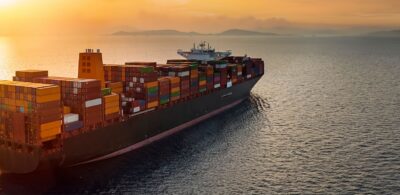Tariff volatility: protecting your profits
12 June 2025
Tariff volatility in 2025 is reshaping global trade and presents a range of challenges to businesses who operate globally.
For businesses engaged in cross-border trade, unexpected costs like tariffs can destroy commercial relationships. Building resilient global trade strategies is essential, and contract drafting plays a key role. Clear drafting, commercial flexibility and early legal input can help mitigate financial and operational risk and preserve commercial relationships. Below are some practical considerations for businesses.
What is a tariff?
A tariff is a government-imposed tax on imported goods. It is intended to increase the cost of foreign products, making them less competitive against locally produced alternatives. Tariffs can be fixed (a set amount per unit) or ad valorem (a percentage of the import value) and are typically collected by customs authorities at the border.
Who imposes tariffs and on what?
Tariffs are applied by national governments on goods entering their territory. Most countries have a standard tariff schedule that applies to all imports, but may also apply:
- preferential tariffs under free trade agreements (FTAs), which reduce or eliminate tariffs on goods from certain countries; and
- retaliatory tariffs, often introduced in response to foreign policy or trade disputes.
Tariffs can apply to virtually any imported good, ranging from raw materials and manufactured goods to agricultural products and consumer electronics.
Who pays the tariff?
While tariffs are imposed by governments, they are usually paid by the importer: the business bringing the goods into the country. These costs often flow through the supply chain, ultimately being borne by downstream manufacturers or consumers. In this way, tariffs can materially impact margins, pricing strategies and procurement decisions.
What rules govern tariff use?
Governments’ ability to impose tariffs is constrained by international trade law. The key rules are found in the World Trade Organization (WTO) agreements and Free Trade Agreements (FTAs). However, WTO and FTA tariff rules are often enforceable only through State-to-State dispute settlement, which brings a layer of geopolitical complexity.
Therefore, companies need to consider how they can self-manage the commercial risks that unexpected tariffs can introduce. There several important, practical considerations for businesses when developing and reviewing contracts.
Contracts in a world of tariff volatility
A tariff clause in contracts can play an important role. Contractual risk allocation determines whether a party must absorb tariff costs or can pass them on. It is therefore commercially important to carefully evaluate both existing and future contractual arrangements to manage the impact of tariffs. Below are four practical considerations for businesses.
1. Define responsibility for tariff exposure
To manage the financial risks associated with tariffs, contracts should include specific provisions allocating responsibility for tariff-related costs. These may include:
- inclusion or exclusion clauses, clarifying whether contract prices include tariff costs;
- International Commercial Terms (Incoterms), which allocate responsibility for shipping, insurance, customs and tariffs in a jurisdiction-neutral manner;
- price adjustment clauses, allowing for price changes or renegotiation if tariffs exceed an agreed threshold;
- escalation clauses, setting out how increased costs will be managed – potentially requiring the parties to negotiate in ‘good faith’; and
- tariff-specific adjustment mechanisms, which enable price changes based on tariff impact.
2. Anticipate legal and policy shifts
Tariffs are often introduced with little notice by executive action or emergency regulation. Political and judicial responses, such as government-negotiated exemptions or court rulings can often increase the uncertainty. Contracts should include legal response mechanisms that address this risk, such as:
- change in law clauses, which can allocate responsibility where new tariffs impose unexpected costs or obligations;
- force majeure clauses that may excuse performance or delay in the event of significant or punitive tariff changes; and
- material adverse change (MAC) clauses, which may allow termination where tariffs materially disrupt performance.
3. Build commercial flexibility into contracts
Companies should ensure they have flexibility and exit mechanisms to mitigate commercial risks of tariff exposure arising from changed market conditions and pricing structures. For example, contracts should:
- consider the risks of exclusivity and minimum purchase clauses, which may lock parties into unfavourable pricing structures;
- consider termination rights,
without cause or triggered specifically by tariff impositions, which can offer strategic exits from unfavourable deals; and
- consider suspension rights in complex supply chains. These may be more useful than outright termination, allowing time to identify alternatives.
4. Establish appropriate dispute resolution mechanisms
Even with clearly drafted terms designed to minimise disputes, it is commercially important to build in robust dispute resolution mechanisms to help manage risk and ensure timely and effective resolution of any disputes that may arise.
- Governing law should be carefully chosen, favouring jurisdictions with strong commercial law frameworks and predictable approaches to trade-related matters.
- Dispute forums should align with the parties’ commercial objectives. This may include requiring mandatory negotiation or mediation to preserve commercial relationships and avoid costly court proceedings, and/or opting for arbitration, as a neutral, confidential and internationally enforceable alternative to litigation.
- Procedural safeguards, such as defined timeframes and processes for raising pricing concerns or seeking relief, can further reduce cost and disruption.
Looking ahead: preserving profits despite tariff volatility
As tariffs return to being a central feature of global trade policy, understanding how tariffs work – and the rules that govern their use – is critical to managing costs, assessing risk and maintaining supply chain resilience. Contracts that proactively anticipate disruption and offer structured, negotiated responses are essential.
Authors

Partner

Head of Arbitration
Associate
Associate
Law Graduate
Tags
This publication is introductory in nature. Its content is current at the date of publication. It does not constitute legal advice and should not be relied upon as such. You should always obtain legal advice based on your specific circumstances before taking any action relating to matters covered by this publication. Some information may have been obtained from external sources, and we cannot guarantee the accuracy or currency of any such information.


